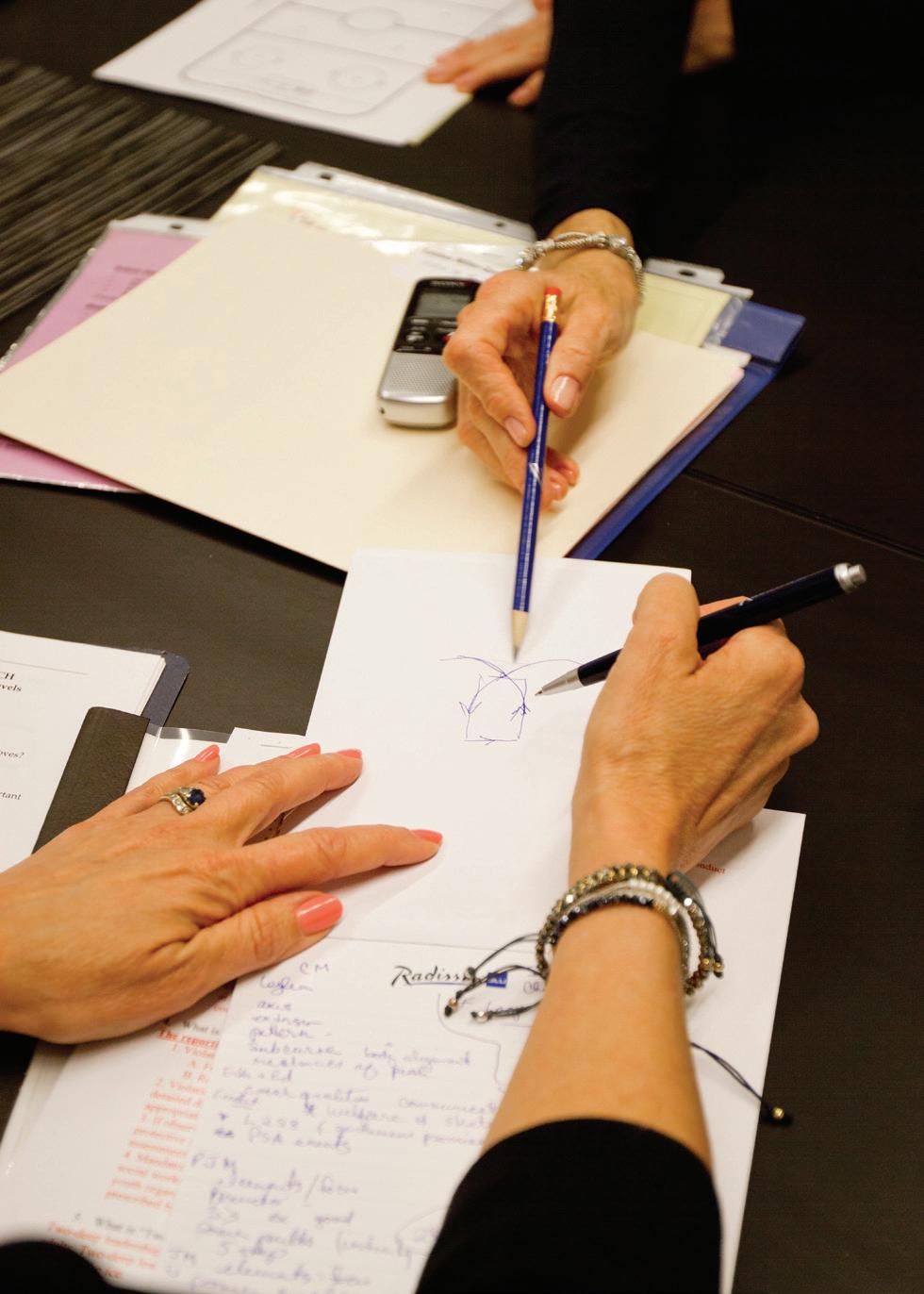EDUCATION Carol Rossignol, MD, MS, MG, MPD, MFF
Justice for Jumping B Y D O U G H AW, M F F, M M
W
hen it comes to the “Justice for Jumping” one must have a systematic approach to jumping. That means having a fixed plan or method that is almost fail proof. To me, the three greatest factors that affect jumping are pattern, positions and timing/rhythm! When a jump is executed first check the pattern….is it proportional to the skater’s height, weight, strength and talent to produce the best jump. When learning a jump, all patterns are smaller as you are skating slower to increase edge pressure. Are the positions on the pattern, preparation edge, take-off edge, flight and landing correct? Does the skater have the correct rhythm/timing of the steps, turns and knee action to compliment the pattern and positions? All of these factors are combined to coordinate with the seven biomechanical principles that produce all the forces and leans involved with jumping.
My 21 Jumpisms “Jumpisms” are simply the one-liners or jumping facts I use that get a quick fix for jumps. 1. Knee over toe On every jump the skating knee must be aligned over the skating toe on the take-off. That would have the hip, knee, ankle, and ball flexed to create the optimum spring action to achieve height. You can mention… the skating foot Achilles tendon stretching, the tongue of the boot pressing into the shin bone, and the laces about to break at the third eyelet from the increased pressure to the ball of the foot. 2. Nose over toes Every jump has your head directly over the skating foot with the nose in line with the toes! 3. Keep your back straight and bend at the knee (on every jump take-off) All jumps require your back to be as straight as possible and lower your center of gravity by flexing at the knee (obviously hip, ankle and ball are engaged as well). I usually tell this to skaters once they are tired when performing the last portion of their program. 4. Wind up and release All jumps, like turns, have a wind-up and release to be created. Whether it is a combination of the free shoulder blade pinching into the spine and/or the free hip and leg held back (like a sling shot) for Axel, Salchow, flip, and Lutz. For toe-loop
16
MARCH/APRIL 2020
it is the skating shoulder blade pinching into the spine and/or the free hip and leg held back, and the loop has the skating shoulder blade pinching into the spine and/ or the skating hip leading pushing forward. 5. Orientation and rotation For more common or counterclockwise jumpers… the left arm is directly extended in front of the body with the palm open facing the abdomen (thumb up) for orientation and the right arm is extended to the side-back of the body with the palm open and the shoulder blade pinching the spine for rotation. The right arm is released and comes forward rapidly across the chest to the left side of the body. This creates rotation! The upper body rotates against the hips on any take-off. The left arm wraps against the tummy ( just above the belly button) to create the “seat belt” position. The body turns into the direction of rotation that is why the right arm must be engaged vigorously as it has the longest distance to travel. 6. Head turns last The head is the last body part to move on the take-off of every jump! 7. Change one variable you must change them all If you increase the speed of the jump you must increase the pattern, edge pressure, and lean on all jumps. 8. Airplane runway All jump take-off edges should be related to an airplane runway. Most take-off edges are too short when faulty. Consider the take-off edge to be similar to an airplane runway and realize that airplanes need a long runway to generate enough speed to become airborne. They cannot take-off like a helicopter! The longer runway allows the rhythm to be complete. 9. Six take-offs, one flight position There are six different take-offs for jumps (Axel, Salchow, toe loop, loop, flip, Lutz) and six different rhythms, patterns, and positions, but there is only one flight position. Once a skater realizes they just have to learn the take-off correctly the rest is simple as they have the same flight position on all jumps! 10. Fast and furious I believe that a skater must execute single jumps as fast as they can (in control of their










